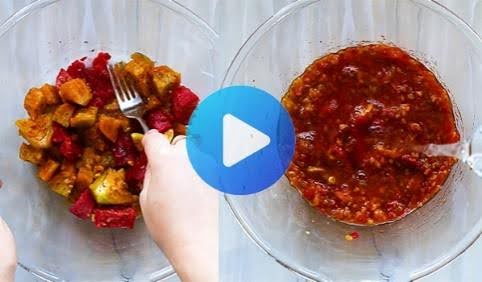A vegan diet isn’t just about saving animals or eating more greens—it can also be a powerful tool for fat loss. Research shows that plant-based diets help women burn fat more efficiently than meat-heavy diets. Let’s break down the science behind it and how you can use this meal plan to reach your goals.
Why a Vegan Diet Burns More Fat
Studies have found that people following a vegan diet tend to have a higher metabolic rate and burn more calories after meals compared to those who eat meat regularly. A study published in JAMA Network Open showed that a low-fat, plant-based diet increased calorie burn after eating by 16%, which means your body keeps working even after a meal.
Here’s why:
- Higher Thermic Effect of Food (TEF): Plant-based foods require more energy to digest, meaning you burn more calories just by eating.
- Increased Insulin Sensitivity: A vegan diet helps your body use carbs more efficiently, reducing fat storage.
- Lower Fat and Higher Fiber: Whole plant foods are naturally lower in fat and higher in fiber, which keeps you full longer and supports gut health.
- Better Gut Microbiome: A plant-based diet promotes a healthy gut, which plays a key role in fat metabolism and weight regulation.
The Vegan Fat-Burning Meal Plan
This meal plan is designed to keep you full, support your metabolism, and maximize fat loss while providing all the nutrients your body needs.
Day 1
Breakfast:
Insider Tip: Enjoying Healthy and Flavorful Plant-Based Dishes with The Complete Plant Based Recipe Cookbook
- Chia seed pudding with almond milk, topped with berries and walnuts.
Lunch:
- Quinoa and black bean salad with avocado and lime dressing.
Snack:
- Hummus with sliced cucumbers and bell peppers.
Dinner:
- Spicy lentil soup with a side of roasted Brussels sprouts.
Day 2
Breakfast:
- Green smoothie with spinach, banana, flaxseeds, and almond butter.
Lunch:
- Chickpea and kale wrap with tahini dressing.
Snack:
- A handful of almonds and an apple.
Dinner:
- Stir-fried tofu with broccoli, carrots, and brown rice.
Day 3
Breakfast:
- Oatmeal with flaxseeds, cinnamon, and sliced pears.
Lunch:
- Lentil and sweet potato bowl with turmeric dressing.
Snack:
- Pumpkin seeds and a cup of green tea.
Dinner:
- Zucchini noodles with tomato-basil sauce and grilled tempeh.
Day 4
Breakfast:
- Scrambled tofu with mushrooms, spinach, and whole-grain toast.
Lunch:
- Quinoa-stuffed bell peppers with a side of mixed greens.
Snack:
- Dark chocolate and a handful of walnuts.
Dinner:
- Black bean and corn tacos with fresh salsa and avocado.
Day 5
Breakfast:
- Coconut yogurt with granola, chia seeds, and fresh mango.
Lunch:
- Buddha bowl with brown rice, chickpeas, roasted sweet potatoes, and tahini dressing.
Snack:
- Roasted chickpeas and a cup of herbal tea.
Dinner:
- Miso soup with tofu, seaweed, and a side of edamame.
Day 6
Breakfast:
- Smoothie bowl with mixed berries, hemp seeds, and almond butter.
Lunch:
- Vegan chili with a side of cornbread.
Snack:
- Carrot sticks with almond butter.
Dinner:
- Grilled portobello mushrooms with quinoa and roasted vegetables.
Day 7
Breakfast:
- Peanut butter and banana on whole-grain toast.
Lunch:
- Mediterranean chickpea salad with olives, tomatoes, and lemon dressing.
Snack:
- A handful of cashews and a piece of dark chocolate.
Dinner:
- Eggplant and lentil curry with brown rice.
By following this meal plan, you’ll be fueling your body with high-fiber, nutrient-dense foods that boost metabolism and support fat loss.
How a Vegan Diet Affects Fat Metabolism
One of the key reasons a vegan diet promotes fat loss is its effect on metabolism. The body burns calories in three main ways:
- Basal Metabolic Rate (BMR): The energy your body uses at rest.
- Thermic Effect of Food (TEF): The calories burned while digesting and absorbing nutrients.
- Physical Activity: Calories burned through movement and exercise.
A vegan diet impacts all three areas positively.
- BMR Boost: Studies show that vegans tend to have a lower body fat percentage and a higher muscle-to-fat ratio, which can lead to an increased BMR. Lean muscle burns more calories at rest than fat does.
- Higher TEF: Plant-based foods, especially those rich in fiber and protein, require more energy to digest. Legumes, whole grains, and cruciferous vegetables have a naturally higher thermic effect than processed foods or animal-based meals.
- Improved Workout Efficiency: Many plant-based foods enhance endurance and recovery. Nitrate-rich vegetables like beets improve blood flow, helping muscles perform better during exercise.
Hormonal Benefits of a Vegan Diet for Fat Loss
Hormones play a huge role in weight management, and plant-based diets positively influence several key hormones that regulate fat storage and hunger.
- Lower Insulin Levels: A plant-based diet improves insulin sensitivity, which helps your body use carbohydrates efficiently instead of storing them as fat. Foods like beans, lentils, and whole grains provide steady energy without spiking blood sugar.
- Reduced Cortisol (Stress Hormone): Chronically high cortisol levels encourage fat storage, particularly in the belly. Plant-based diets are rich in antioxidants and magnesium, which help lower stress levels.
- Increased Adiponectin: This hormone helps regulate metabolism and fat burning. Research shows that plant-based diets can boost adiponectin levels, enhancing the body’s ability to use stored fat as energy.
Common Myths About Vegan Diets and Fat Loss
Despite the scientific backing, some myths persist about plant-based diets and weight loss. Let’s address them:
1. “You need animal protein to build muscle and burn fat.”
Plant-based protein sources like lentils, tofu, tempeh, and quinoa provide all the essential amino acids needed for muscle growth and recovery. Many elite athletes thrive on a vegan diet while maintaining lean muscle mass.
2. “A vegan diet is high in carbs, which leads to fat gain.”
Carbs are not the enemy. The quality of carbohydrates matters. Whole-food carbs like quinoa, sweet potatoes, and oats provide fiber and essential nutrients that promote fat loss. Processed carbs like white bread and pastries are the ones to avoid.
3. “You won’t get enough iron or B12, which affects metabolism.”
Iron-rich plant foods like lentils, spinach, and pumpkin seeds support energy levels and metabolism. While B12 is not naturally found in plants, it’s easily supplemented. Many plant-based milk alternatives and nutritional yeast are fortified with B12.
How to Maximize Fat Loss on a Vegan Diet
Switching to a vegan diet alone can improve health and weight loss, but a few additional strategies can enhance results:
1. Focus on Whole Foods
Minimally processed plant foods contain more fiber, vitamins, and minerals while being lower in calories. Whole foods also digest more slowly, keeping hunger levels in check. Prioritize foods like:
- Leafy greens (spinach, kale, collard greens)
- Cruciferous vegetables (broccoli, cauliflower, Brussels sprouts)
- Whole grains (quinoa, brown rice, farro)
- Legumes (chickpeas, black beans, lentils)
- Healthy fats (avocados, nuts, seeds)
2. Eat Enough Protein
Protein is crucial for muscle maintenance and fat burning. Some of the best vegan protein sources include:
- Tofu and tempeh
- Lentils and beans
- Edamame
- Hemp seeds and chia seeds
- Plant-based protein powders
Aim for 15–20 grams of protein per meal to support lean muscle and recovery.
3. Avoid Processed Vegan Junk Food
Not all vegan foods are healthy. Many store-bought vegan snacks, frozen meals, and processed plant-based meats are loaded with unhealthy fats, refined sugar, and excess sodium. Stick to whole foods whenever possible.
4. Time Your Meals Strategically
Meal timing can influence fat-burning efficiency. Try:
- Starting your day with protein and fiber to keep blood sugar stable.
- Eating complex carbs before workouts for sustained energy.
- Avoiding heavy meals late at night to prevent excess calorie storage.
5. Stay Hydrated
Water plays a key role in metabolism. Drinking enough water helps the body break down fat and prevents dehydration-related hunger signals. Herbal teas and infused water with lemon, cucumber, or mint are great additions.
You Might Be Interested In: Exploring Delicious Vegan Recipes With This Cookbook
6. Incorporate Strength Training
Cardio is great for heart health, but strength training is essential for maintaining muscle while losing fat. Resistance exercises like squats, lunges, and weightlifting can enhance fat-burning by increasing muscle mass.
Signs That Your Vegan Diet Is Working for Fat Loss
If you’re following a plant-based meal plan for weight loss, here are some signs that it’s working:
- You feel full and satisfied after meals without cravings.
- You have steady energy throughout the day.
- Your digestion has improved (less bloating, more regularity).
- Your clothes fit better, even if the scale doesn’t change immediately.
- You recover faster after workouts.
Fat loss isn’t just about the number on the scale—it’s also about how you feel and how your body composition changes over time.
Related YouTube Video
Here’s a great video to help you get started:
Final Thoughts
A vegan diet offers a science-backed approach to fat loss by improving metabolism, regulating hormones, and providing nutrient-dense foods that keep you full. By focusing on whole foods, getting enough protein, and staying active, you can maximize fat-burning while enjoying a healthy, balanced lifestyle. Whether you’re transitioning to plant-based eating or refining your current diet, this approach can help you achieve sustainable fat loss and overall wellness.







